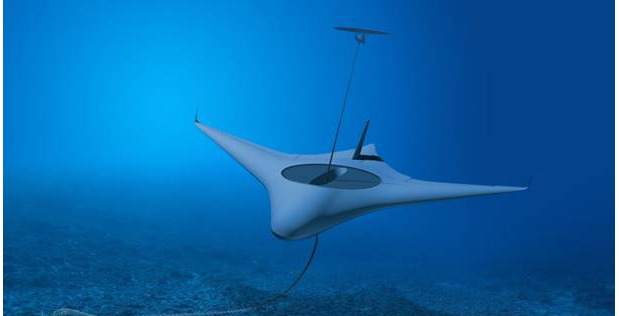Manta Ray: DARPA's Latest, Secret Underwater Unmanned Vehicle
New extended range unmanned underwater vehicles (UUVs) being developed by DARPA featuring significant advancement in capabilities enabling them to operate autonomously for extended duration without direct human intervention for logistics or maintenance.


As the U.S. strategic priority shifted towards near-peer competition with China emerging as the most credible threat on the horizon for the U.S. defense planners, almost a decade back, they started focusing on the Pacific theater with a clear focus on building and developing military capabilities for that. It meant requirement of systems which were capable of traversing the large distances involved while tackling the logistics involved, including, refueling while carrying sufficient payload of weapons and munitions.
In the aerial theater, the development of the B-21 Raider Long-Range Strike Bomber (LRS-B) for the USAF, with its very long range and sizable payload of onboard weapons is geared towards this objective of being able to strike at targets and knock down air defenses of the U.S.' primary adversary, namely, China, in case of a direct military confrontation.
In the underwater warfare theater, where the USN has a clear upper hand over the Chinese Navy so far, DARPA's latest Manta Ray program is likely to take that technological superiority to another level. Initiated in 2020, the Manta Ray program intends to demonstrate critical technologies required for the development of a long range Unmanned Undersea Vehicle (UUV) capable of operating for extended duration silently without human support or intervention for logistics or maintenance as a perfect complement to manned surface or underwater naval assets operated by the U.S. Navy.
Manta Ray is a multi-phased effort being pursued by DARPA, initiated in 2020, with Northrop Grumman and Pacmar Technologies being directly involved in the Phase 2 of the program. The program recently achieved a key program milestone in September 2023 with a scale prototype, developed by PacMar Technologies, successfully undergoing in-water splash testing off the coast of Hawaii, thereby, validating performance of the onboard sensors and hydrodynamic performance of the vehicle, in addition, to key autonomy behaviors.
Northrop Grumman, too, recently completed the development of a full-scale Manta Ray prototype in early April 2024. The milestone would now be followed by an upcoming full-scale, at sea demonstration after early prototyping and risk reduction activities are completed.
The Manta Ray marks a huge leap in UUV capabilities following the development of a number of key technologies, including, low power propulsion, significant increase in payload capacity and energy management techniques with all of them aimed at extended range, autonomous, under water operations with a significant payload capacity without detection across the Pacific theater.
Image Credits: DARPA


